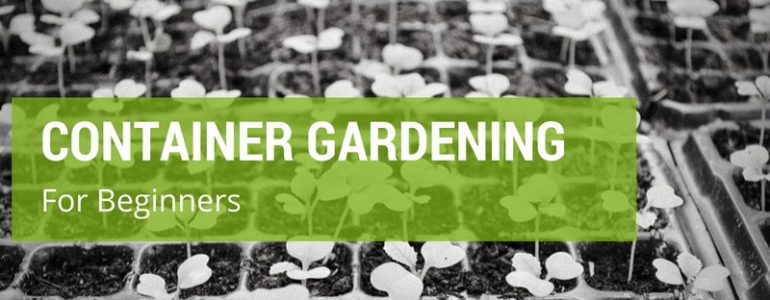Container gardening is popular these days because it is a great way to beautify your living space and grow fresh fruits, veggies and herbs for your kitchen. No matter how little space you have, you can create a beautiful, useful garden. Even if you only have a little space beside your house or path, a balcony or a small garden plot, you can have a nice herb garden, some flowers and tasty veggies to brighten your life.
Unlike a large, stationary garden, container gardening is quite mobile and versatile. You can move your containers from place to place to brighten any setting. You can set your containers on ledges or pedestals and make good use of hanging baskets. Tomatoes and strawberries are examples of edible, beautiful plants that do very well trailing hanging baskets.
If you have a large veggie garden, you can set up a container herb and/or flower garden within it as an accent. Container gardening gives you the flexibility to change the appearance and function of your garden setting quickly and easily with the changing of the seasons. Change plants and containers as you wish for seasonal appeal.
Start with a good plan
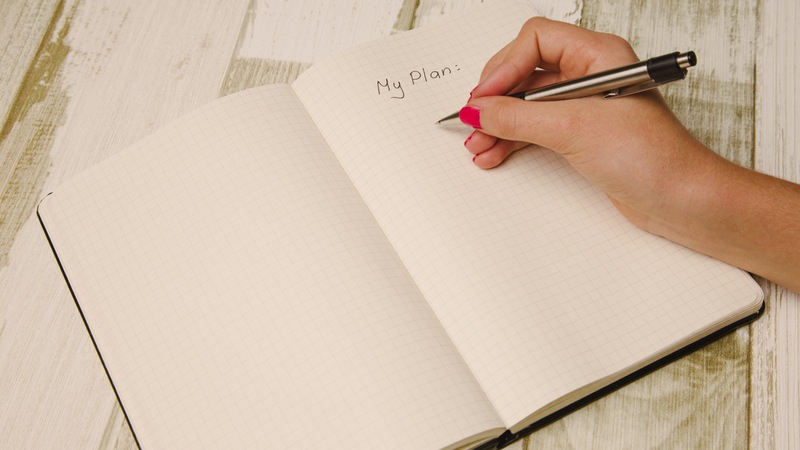
When you are planting directly in the ground, the lay of the land has quite a bit of influence over the plants you choose. One advantage of container gardening is that you have much more control over soil content and your garden setting in general.
Think about what you want to grow, and then determine the number of containers and the size of containers you want. When making this determination, here are a few things you should keep in mind:
- How big will your chosen plants grow?
- How much room will they need for a healthy root system?
- Are you planting annuals, perennials or a combination?
- How fast will your plants grow?
Take these factors into consideration to avoid having your plants outgrow their pots too quickly. When a plant becomes too big for its pot, it becomes root-bound. This means that the roots take up most of the space in the pot and there is little soil to retain water.
Inadequate pot size results in thirsty, unhealthy plants. It also results in extra work for you because you will need to water more frequently to keep your plants alive, and you will need to repot your plants so that they will have enough room.
Good preparation makes a good garden
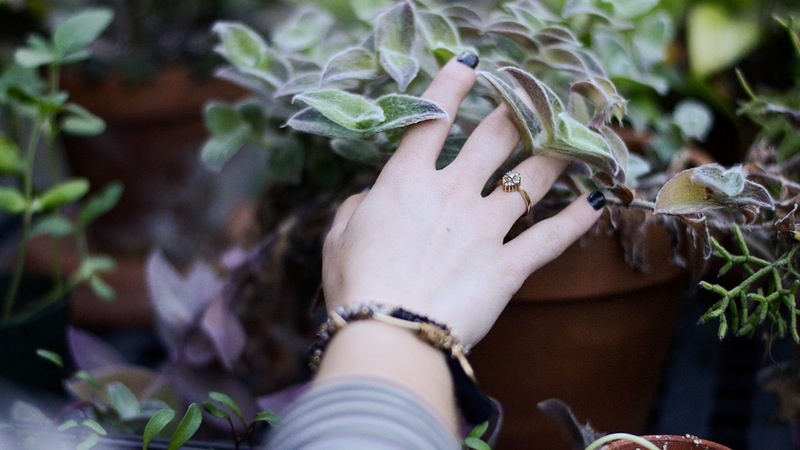
Studying each type of plant you hope to grow will help you determine just how large and deep a container must be to keep it happy. Be realistic in your choices. If you have a very small area to work with, obviously you should not choose plants that will overwhelm your space or you!
You should also be realistic in terms of the structure of the space you have. If you are planning to put your garden on a deck or balcony, keep the weight of the final project in mind. It would not do to have your deck or balcony collapse under the weight of your container garden! Choose lightweight containers of a size that will fit your space and will not overtax its weight-bearing limitations.
Keep sun exposure in mind when selecting your containers. If you get a great deal of very bright sunlight, you would be wise to choose light coloured containers. They reflect the heat of the sun rather than absorbing it. This will help keep your plants’ roots cool while conserving water.
5 Frequently chosen container types
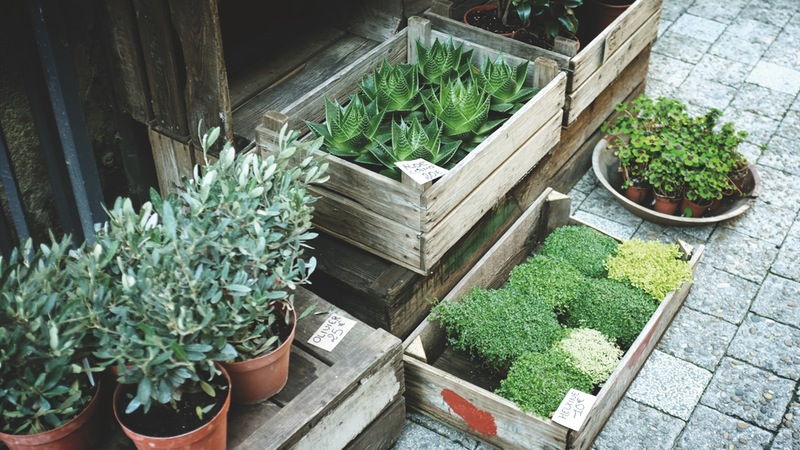
1. Terra cotta: Many gardeners still swear by old-fashioned, traditional clay pots. These are certainly a good choice in terms of drainage and root aeration. They also present an attractive, classic appearance in the garden. They can be a bit costly. Additionally, you must remember that they are breakable and somewhat subject to damage when exposed to extremes of temperature.
2. Concrete: If you are planning on setting up your container garden in a permanent location, concrete planters are nice and sturdy. They endure all kinds of weather, and if you are so inclined you can construct a concrete planter as a do-it-yourself project.
3. Hypertufa: You may also wish to consider creating your own hypertufa containers. Hypertufa is a substance that is made up of equal parts:
- Coconut coir or sawdust
- Cement
- Sand
Naturally, you would add enough water to this combination to create a clay you can work with. There are a number of different recipes available. Some call for the use of peat moss or sphagnum moss instead of coconut coir or sawdust; however, the latter are far more environmentally friendly choices and they are far more affordable (sometimes free).
Hypertufa can be used to make almost indestructible, lightweight, inexpensive planters and garden ornaments. Instructional articles and videos abound online. When you explore this topic, you will find that there are many different recipes for hypertufa, and the creative gardeners who have discovered it can regale you with a generous collection of tips and advice. Many gardeners find a great deal of satisfaction in creating their own containers with hypertufa.
4. Petroleum based: Plastic pots and containers can be attractive and useful, but they are an environmental nightmare. Be sure to repurpose any that come your way to prevent having them end up in the landfill and, inevitably, in the ocean.
If you purchase plastic containers, be sure to get higher quality containers that are flexible (as opposed to cheap and stiff). These will last longer and perform better. Be sure to recycle any unwanted plastic containers when they have outlived their usefulness. Remember that purchasing plastic goods made of recycled plastic is a smart way to conserve resources.
5. Double-walled: If you are short of time, you may want to invest in a set of double-walled containers. These ingenious devices come as standard pots and planters, window boxes, hanging baskets and more. They are self watering and help cut down on the time you spend caring for your plants.
Cover unattractive pots with a cachepot
You can cover plain pots (e.g. “disposable” plastic pots) with what is known as a “cachepot”. This is a more attractive, ornamental pot that may not have drainage holes. If you do use a cachepot, be sure to line the bottom of it with gravel before setting your planter inside. Water sparingly to prevent water buildup in the cachepot, and check frequently to see if you need to pour off excess water.
Wood and metal are possibilities as planter materials, but keep in mind that wood tends to decompose, and metal tends to rust. Neither one is ideal for direct planting, but both can make nice cachepots.
How big should your containers be?
If you are planning on creating a serious garden, it is better to go with larger containers. They take a bit more work to set up, but they take much less work in terms of care. If you have multiple, small containers you will find yourself watering almost constantly in hot weather because they dry out far too quickly.
With large containers, you can plant densely and create natural ground cover (filler plants) to help prevent evaporation of precious water. Additionally, your chores such as fertilising and harvesting will be easier with one large container garden (or a few) than with multiple small containers. Plants are also more likely to grow successfully in large containers than in small ones.
Good drainage is essential
No matter what sort of containers you choose, you must be sure to provide good drainage. There are very few plants that do well sitting in water. For the most part, too much water leads to root rot and plant death. Be sure to select containers that have ample drainage holes, or drill some holes in your pots if you find them lacking.
To prevent loss of soil, cover the holes in the bottom of your planters with something that will allow water to drain while holding the soil in. Some good choices are:
- Paper tower
- Newspaper
- Coffee filters
Improve drainage even more by adding a one inch layer of gravel or Styrofoam packing peanuts. You can make a thicker layer if you need to fill excess space.
Prepare your planting medium
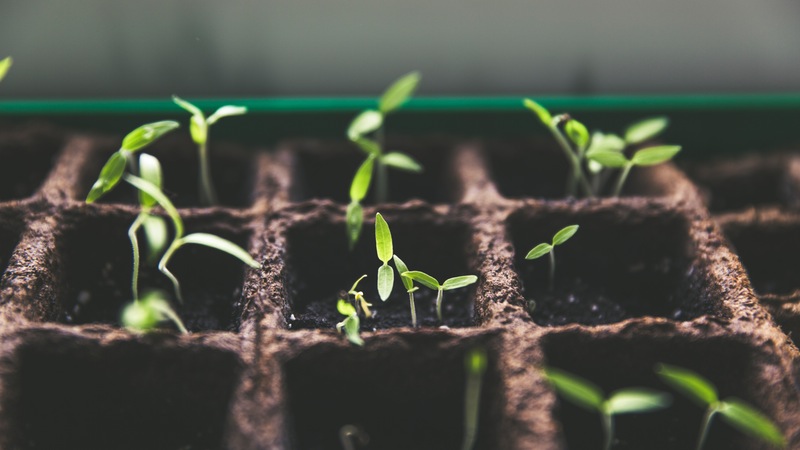
Be sure to use the right type of soil or planting mix for your containers. Regular garden soil is too heavy, and you should use a different sort of mix for small and large containers. Follow these guidelines for best results:
- For small containers (maximum one-gallon) use houseplant mix.
- For large containers use a light, coarse mix made up of equal parts of pulverised fir or pine bark, vermiculite or perlite and compost. You can make this yourself or purchase it at a garden center. This is a standard, commercial planting mixture.
- Per cubic foot of mixture, add nutrients as follows:
- Phosphate (rock or colloidial) 1 pound
- Dolomitic Limestone: 4 ounces
- Granite dust: 1 pound
- Blood Meal: 2 ounces
Be safe!
It’s always smart to wear appropriate safety gear. The ingredients in planting mix are dusty and can be irritating to your eyes, nose, throat and lungs. Be sure to wear a dust mask and safety goggles while mixing. Protect your skin as well with gardening gloves and long sleeves. Wash up and change your clothes and garden boots or shoes after mixing to reduce the chance of skin irritation.
Dampening the mixture as you work can help reduce dust, and you will want to soak your planting mixture before adding plants. You can either do this before you fill your pots or, drench the mixture after you have added it to the pots. Either way, be sure the mix is uniformly moist throughout before you begin planting.
Water carefully and well
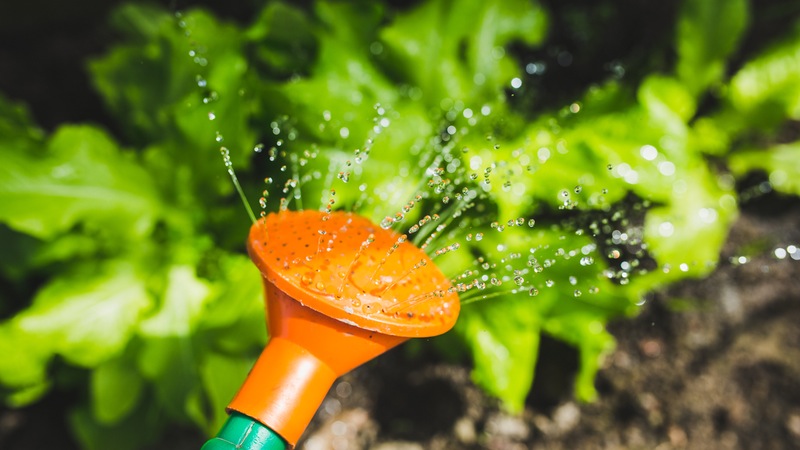
Remember that plants in containers will need more water than plants in the ground. The relatively small amount of planting mix means water is limited to begin with and will evaporate more quickly. Pay close attention to the weather, and keep the size of the pot and the needs of the plant in mind. Never let your containers become completely dry because your plants will suffer, and it is difficult to rehydrate them once this happens.
Set up a watering schedule, and check the soil regularly. If the top couple of inches of soil feel dry, you should water. Frequency of watering will vary according to the weather. Naturally, you will not water if you get good rain. Also, if the days have been cool you may not need to water as often.
Adding a layer of mulch to your containers will help the soil retain moisture. It also gives your container garden a nice, uniform appearance. When you mulch, don’t allow the mulch to pile up around plant stems. This contributes to root rot.
Fertilise lightly and frequently
Container plants need more nourishment than plants in the ground because they have fewer resources. Be sure to give your plants a nice organic tonic every couple of weeks. Some good choices are:
- Fish emulsion
- Seaweed extract
- Compost tea
Use a diluted solution to avoid burning the roots. You can also deliver nourishment through foliar feeding. To do this, simply give your plants a good spraying with a diluted fertiliser solution. Plants soak in a great deal of nourishment through the leaves, and foliar feeding can actually be more effective than feeding the roots.
Prune and cull effectively
To keep your containers looking their best and to safeguard your plants’ health, be sure to remove dead leaves and spent flowers. Removing damaged, unsightly vegetation helps prevent the development of fungus. Pruning back excessively leggy limbs and deadheading (removing) spent blossoms will encourage more blooms.
View your plants with a critical eye, and remove those that simply fail to thrive despite your best efforts. It may take a bit of trial and error to hit upon just the combination of plants that will work best for you.
Healthy plants repel pests
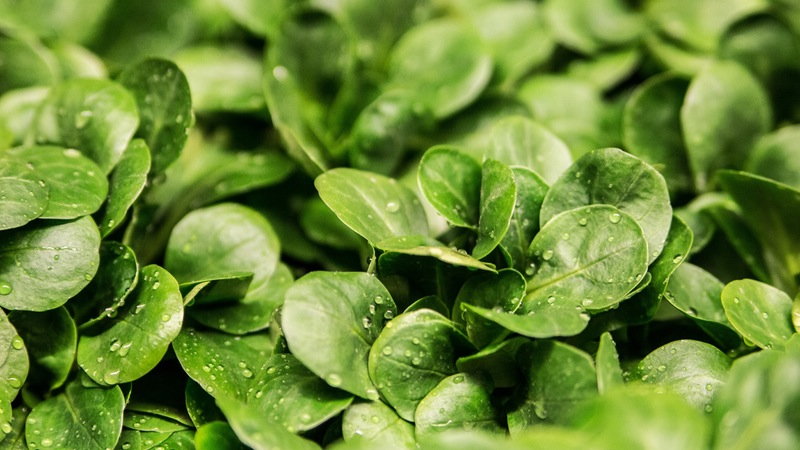
When you take good care of your plants, cut back damaged vegetation and remove plants that are diseased, you have a good chance of avoiding pest problems. Understand that insects are generally attracted to weak plants. Those that are strong and healthy have natural defences against pests.
Using good companion planting methods will also help keep pests at bay. Introducing beneficial fauna, such as praying mantis, ladybugs and other desirable insects will also help prevent problems with pests.
If you do have a pest problem, avoid using harsh chemicals and poisons to deal with it. This is entirely unnecessary and can have a negative effect on your plants, your garden, your veggies and you!
Instead, pick off pests by hand and use mild, natural deterrents. Sometimes you can just spray pests away with the garden hose or simply remove affected parts of plants and dispose of them properly.
Choosing & planting
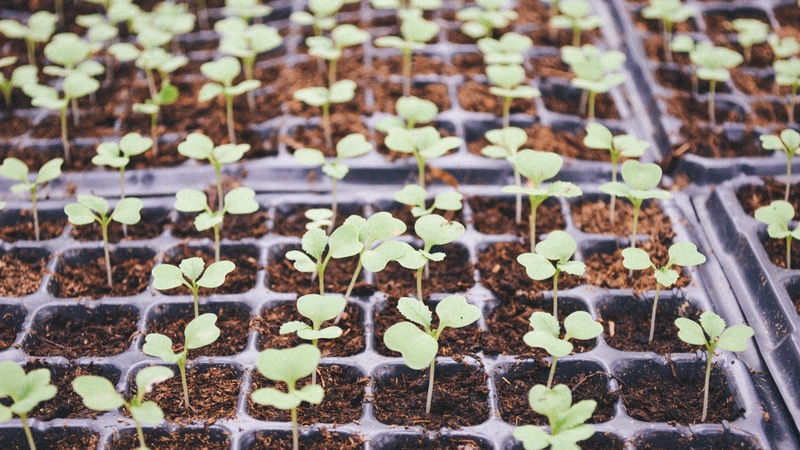
You can grow almost anything in a container garden. You are only limited by your setting and your imagination. If you are dealing with a small space, you may want to make a special study of compact cultivars and dwarf varieties that are specifically developed to do well in containers.
How to plant your container for the most visual appeal and versatility
Combining container plants for a gorgeous appearance and healthy growth is a skill akin to flower arranging. Once you have the knack of it, you can create some striking and useful combinations. Keep these guidelines in mind:
1. Start with a plant that makes an excellent focal point. Showy, colourful plants such as geranium or coleus are good examples. These should make the centrepiece of your arrangement.
2. Fill in around your centrepiece with pretty plants that are slightly smaller than your centrepiece. Herbs are a good choice. For example:
- Licorice
- Salvia
- Mints
These are all nice filler plants that are both attractive and useful in cooking and making teas.
3. Finish up by creating an edge of plants that will spill over the sides of the pot. Among flowers, petunias are a nice choice. Ornamental sweet potato is a good foliage choice. If you want to add something edible, strawberries are attractive and useful.
Create three tiers
The combination described above is often referred to as the “thriller, filler and spiller” planting method. The idea is that you want your tall, eye-catching plant in the center, dense, lower planting to fill space surrounding it and lush, abundant plants spilling over the sides.
You can create this effect with plants alone, or you can increase the height of your centrepiece by starting with a trellis or other structure.
Plant a climbing vine to occupy center position. In a floral combination, Sweet Pea or Morning Glory might be nice choices. In your veggie garden, your center trellis is the perfect place to plant your beans.
Get creative with companion planting
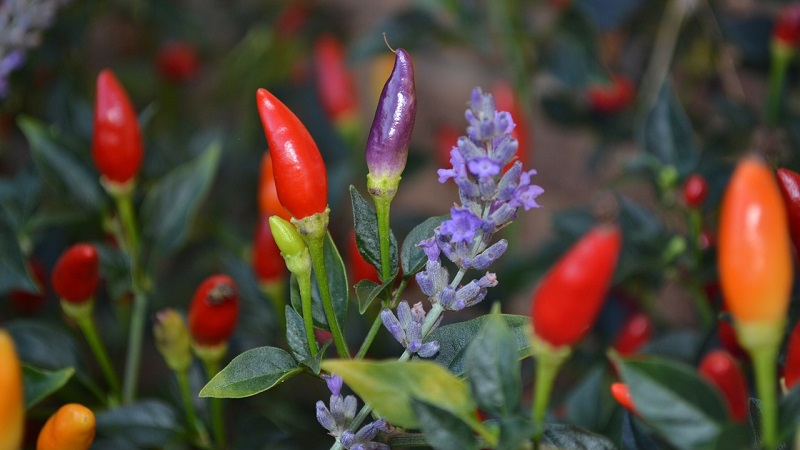
Don’t be hampered by outdated ideas. Feel free to mix flowers, herbs and veggies both to please the senses and to benefit one another. Many plants make good companions because they “help” each other. For example, plants in the hemlock family, such as peppers, potatoes and tomatoes do well when planted with basil. This is because basil repels a number of insect pests. Basil also improves the flavor of the produce of most plants that are grown around it.
Garlic is tasty and has pretty white or lavender flowers. It also repels Japanese beetles, snails and aphids. For these reasons it makes it a good companion plant for a wide variety of ornamental and veggie plants.
Some good veggies for container gardening include tomatoes, cabbage and broccoli, which can all be grown individually in 5-gallon buckets or used as the centrepiece in a three-tier container garden.
Some other good choices for creative combining include bush or dwarf versions of veggies such as:
- Winter squash
- Pumpkins
- Tomatoes
Tomatoes make good centrepiece plants, and squash and pumpkins make nice “spilling” plants around the edges of your containers. Additionally, by having them spill over the sides, you save ground space. This gives you more room to plant flowers, herbs and small veggies densely as filler.
Companion planting is an interesting topic on its own, and one you can study intensively. There are many fine resources online that will help you learn how to choose your container plants skillfully and creatively.
Combine bulbs, annuals and perennials
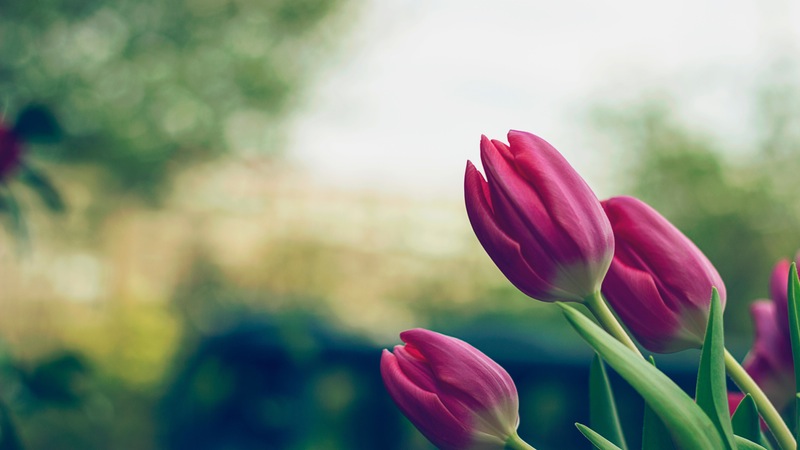
When choosing your plants, pay close attention to their growing and blooming/producing seasons. With careful selection, you can be sure of always having something interesting happening in your container garden.
For example, if you are doing a container bulb garden you could layer your bulbs. Begin in the late autumn.
Just plant the biggest bulbs that take the longest to grow and mature on a couple of inches of planting mix in the bottom of the container. Add a couple of inches more planting mix and then add a layer of medium size bulbs that will grow and bloom a little faster. Add a couple more inches of mix and add a final layer of small bulbs that will mature and bloom quickly.
Top this off with more planting mix and an annual flower seed mixture. Cover this with a light mulch. In the springtime, your seeds will grow and bloom first, followed by your bulbs in succession.
Just trim away the spent blossoms and foliage on a regular basis, and you will be able to enjoy a fresh showing of flowers from spring until fall.
Good choices of bulbs to use for this are:
- Large bulbs: Daffodils
- Medium bulbs: Tulips
- Small bulbs: Grape hyacinth
- Seed mix: Annuals of your choosing
You can enjoy your layered bulb container garden for years, but you will need to divide your bulbs every couple of years to prevent overcrowding.
Create a theme garden!
If you have little ones (or even if you don’t) you might have a lot of fun planting a theme container. For example, nothing could be easier or more successful and attractive than a veggie pizza garden. Try a combination of:
- Roma tomatoes
- Purple & green basil
- Red, yellow & green sweet peppers
This is a pretty, cheerful, flavorful combination that is sure to please.
Devise a salad garden made up of:
- Romaine lettuce
- Butternut lettuce
- Cherry tomatoes
- Field greens
- Cilantro
- Parsley
- Chives
Other ideas might include a soup garden, a holiday dinner garden, etc. Think about what you need to create a favourite dish and grow your own!
Enrich your life with container gardening
Container gardening is popular because it’s fun and satisfying. It makes gardening available to everyone. When you take care to plan your garden well, use the right soil and water and feed your plants correctly, you are sure to enjoy a satisfying and enriching experience.
Resources:
